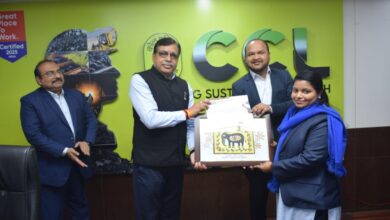Limiting Development In Flood-Prone Urban Areas Will Save Lives When Floods Occur In Nepal :WWA
The study was conducted by 20 researchers as part of the World Weather Attribution Group

PICTURE COURTESY : EcoWatch
There is an urgent need in Nepal to limit development in low-lying, riverside areas of cities and scale-up early warning and early action systems to avoid repeat flooding disasters. according to the highlights of a study by World Weather Attribution (WWA) on Nepal floods. A rapid analysis by a team of leading scientists found that Late September floods that killed 244 people in Nepal were driven by rainfall made about 10% more intense by climate change & global warming.
Kathmandu, the largest city in Nepal and amongst the hardest-hit districts by the floods, is built around the Bagmati River in a bowl-shaped valley and has experienced rapid growth in recent decades. Limiting development in flood-prone urban areas will reduce the number of people in harm’s way and save lives when floods occur in the future, the researchers say. The study was conducted by 20 researchers as part of the World Weather Attribution group, including scientists from universities and meteorological agencies in Nepal, India, Sweden, the United States and the United Kingdom.
These floods turned the streets of Kathmandu into raging rivers. Clearly, climate change is no longer a distant threat in Asia. With every fraction of a degree of warming, the atmosphere can potentially hold more moisture, leading to much heavier downpours, and catastrophic floods like these.
The analysis found:
● Climate change has made extreme three-day downpours in Nepal about 10% more intense.
● Bursts of rainfall will become even heavier, risking more destructive floods until the world replaces fossil fuels with renewable sources of energy.
● Reducing development in flood-prone areas.
The floods followed three days of extreme rainfall from September 26. Records were broken across central and eastern Nepal, with weather stations recording more than 320mm on September 28 – equivalent to about half of London’s total annual rainfall.
Three-day rainfall episodes are increasing as fossil fuel emissions heat the climate, the scientists found. In a 1.3°C cooler world without climate change, similar events were extremely rare. However, today, they are about 70% more likely, expected to occur on average about once every 50 years. Downpours are also becoming more intense – overall, climate change made the rainfall about 10% heavier.
These findings agree with a large and growing body of scientific evidence that highlights how a warmer atmosphere, heated by fossil fuel emissions, can hold more moisture, resulting in heavier downpours. The study highlights how rapid development greatly worsened the impacts of the flood.
Friederike Otto, Senior Lecturer at the Centre for Environmental Policy, Imperial College London, said: “Yet again, we’ve seen fatalities from a flood in Asia reach triple digits in 2024. “The world’s sluggish shift away from oil, gas and coal is resulting in death for the poorest, most vulnerable people. “Floods like these will keep getting bigger, deadlier and costlier until fossil fuels are replaced with renewable energy.”
Emmanuel Raju, Director, Copenhagen Centre for Disaster Research, University of Copenhagen said: “Climate change and disasters’ impacts are pushing the most vulnerable into cycles of debt and poverty. “Disasters are developmental problems as clearly seen in Nepal. It is high time to avoid disaster risk creation, focus on climate change adaptation and mitigation. “Efforts must be made to avoid building in unsafe areas. Social protection investments are needed immediately to help with recovery and future disaster risk reduction.
The writer of this article is Dr. Seema Javed, an environmentalist & a communications professional in the field of climate and energy




